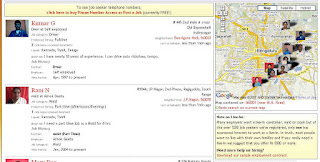The New York Times today has a very interesting article on how technology innovation is being used to help the poor. This time, its social networking. Here is an excerpt:
Mr. Krishna found that many poor Indians in dead-end jobs remain in poverty not because there are no better jobs, but because they lack the connections to find them. Any Bangalorean could confirm the observation: the city teems with laborers desperate for work, and yet wealthy software tycoons complain endlessly about a shortage of maids and cooks.
Mr. Blagsvedt’s epiphany? “We need village LinkedIn!” he recalled saying, alluding to the professional networking site.
The last big innovation (or technology) that helped the poor in India is cellular phones. My parents (who live in New Delhi, India) could now call up an electrician or plumber directly on his cell without going through middlemen shop owners who earlier took most of the money simply for connecting us to the nomadic, ill connected electricians and plumbers. Not only did they get to keep all the income but the incomes went up as they could now be fully utilized as opposed to waiting for someone to call them in the shop where they sat idle earlier.
The last paragraph in the New York Times article is perhaps the most telling about why India (and many emerging countries) have a very bright future indeed:
Mr. Manhohar earns $100 a month. Jobs come irregularly, so he often spends up to three months of the year idle. Between jobs, he borrows from loan sharks to feed his wife and children. The usurers levy 10 percent monthly interest, enough to make a $100 loan a $314 debt in one year.
Mr. Manohar does not want his children to know his worries, or his life. He wants them to work in a nice office, so he spends nearly half his income on private schools for them. That is why he was at Babajob in a swiveling chair, staring at a computer and dreaming of more work.
